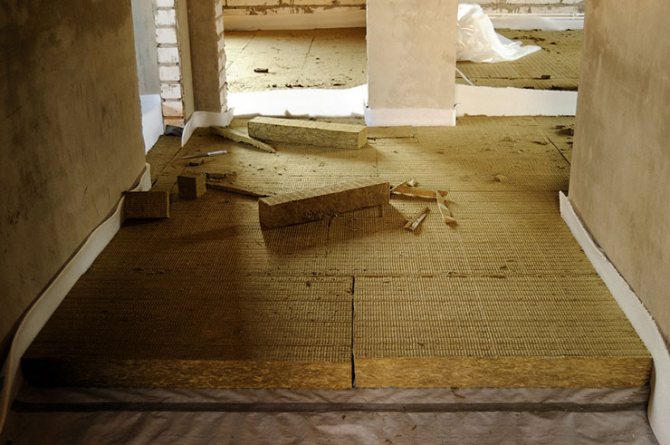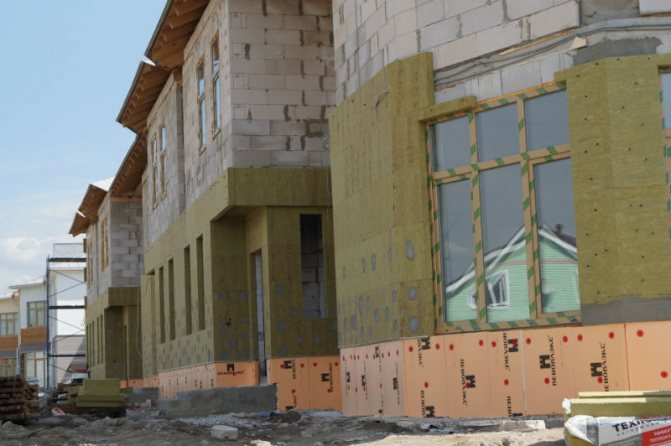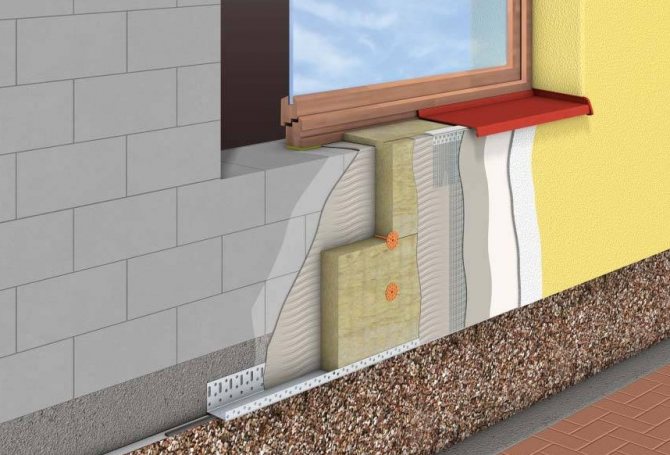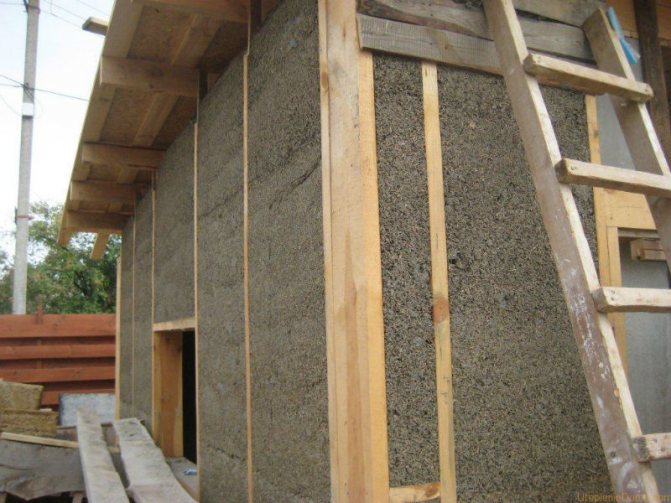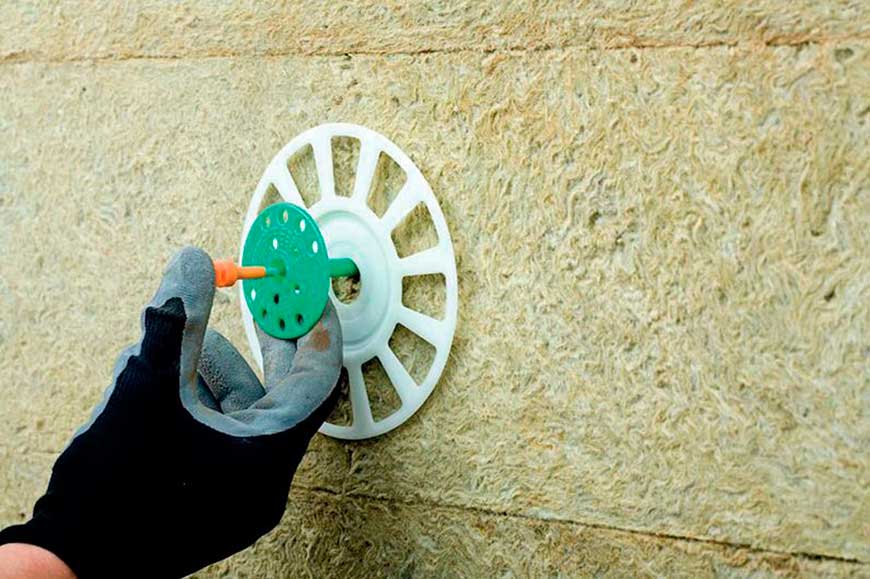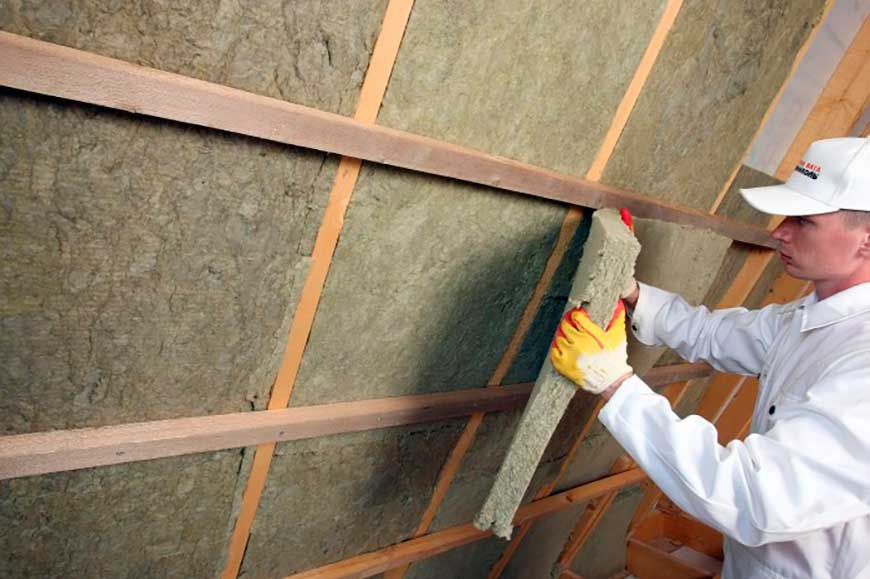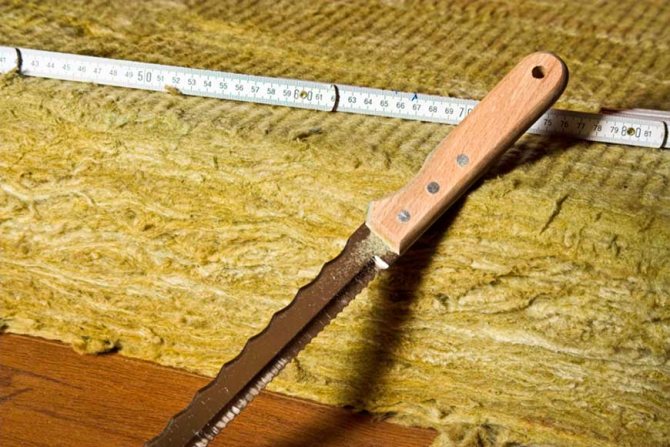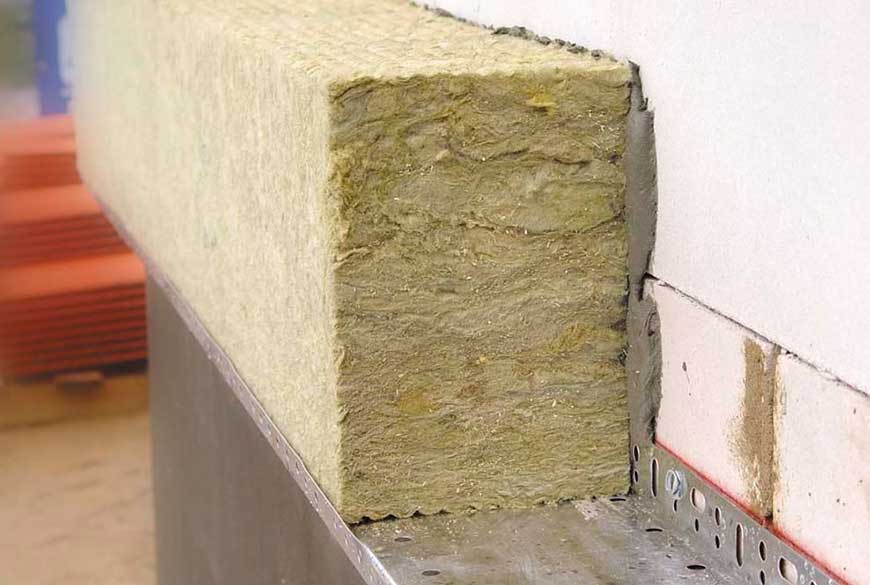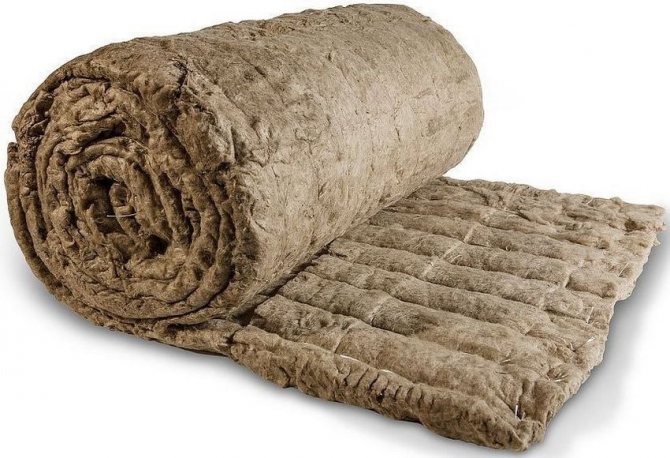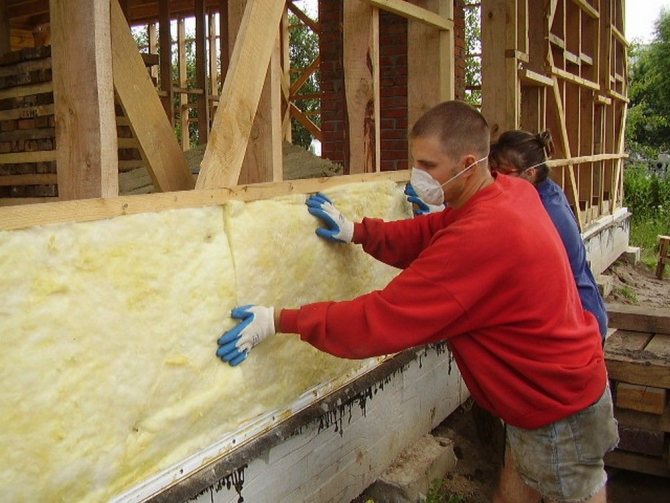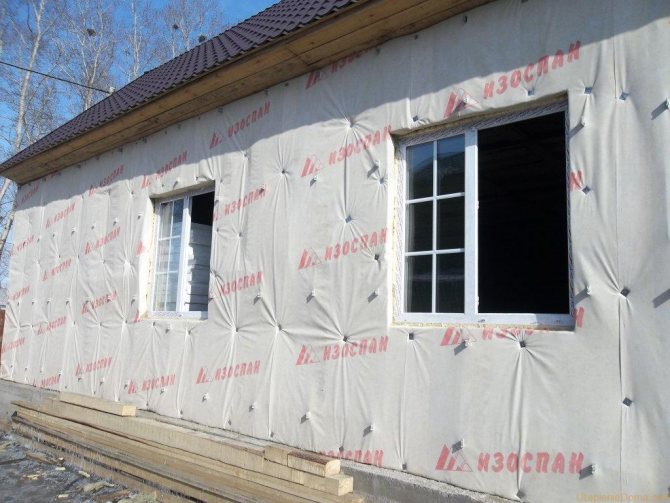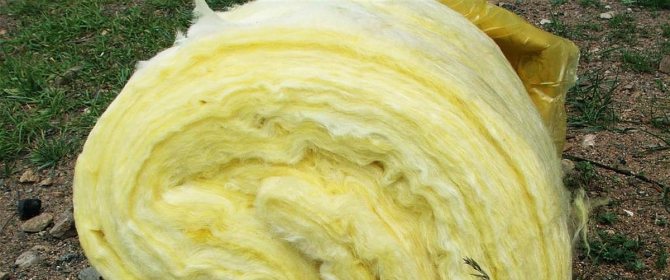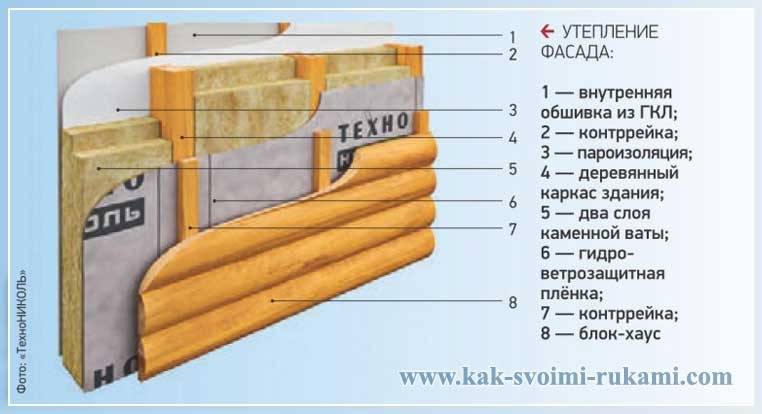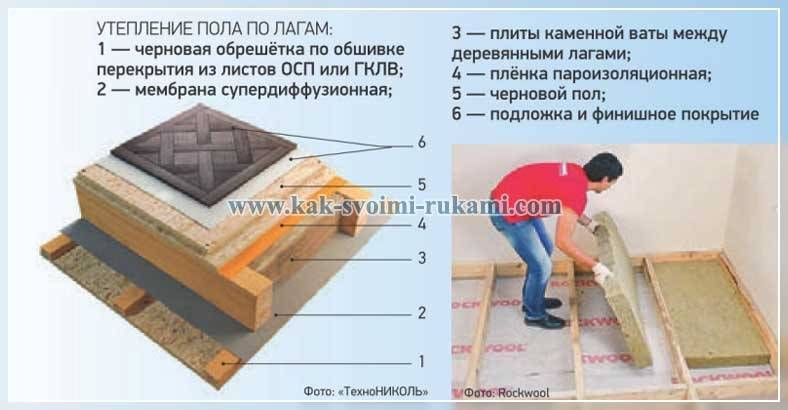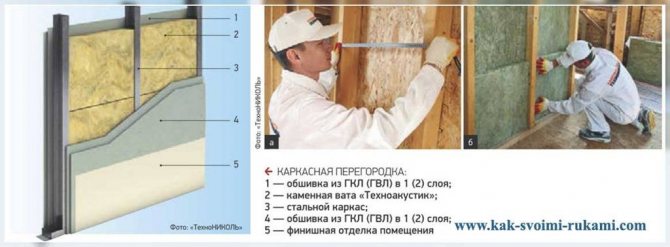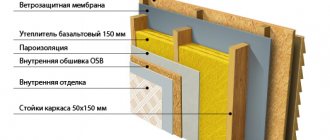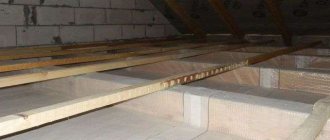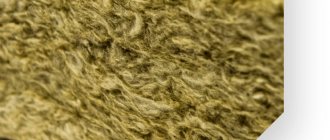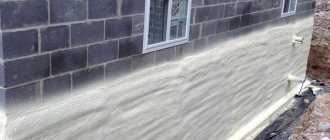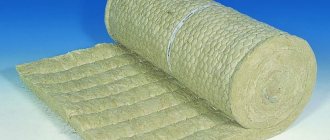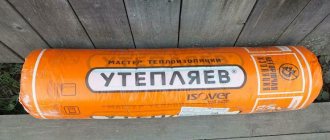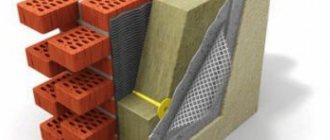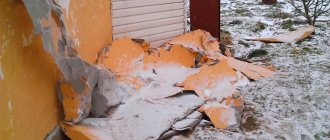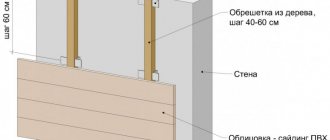Basalt wool is considered one of the highest quality and most widely used heat insulators today.
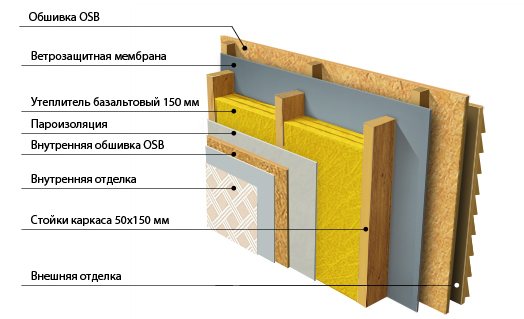
Made from natural materials, it is safe for residential use. It can be encountered when decorating a house, in the process of building buildings for various purposes. No less widely, this building material is used in the construction of private houses, as well as in the thermal insulation of air ducts.
The use of basalt wool is in demand to ensure thermal insulation of industrial equipment (boilers, boilers, furnaces), process pipelines and pipelines of heating networks. Basalt slabs can be used as unloaded sound and heat insulation in a horizontal enclosing structure of any type of building and structure. In addition, basalt insulation is used for thermal insulation, which is subjected to loads in horizontal, inclined and vertical building envelopes and other types of structures.
Thermal insulation of the roof with basalt wool
Insulation of roofs with basalt wool is a very common use of the material.
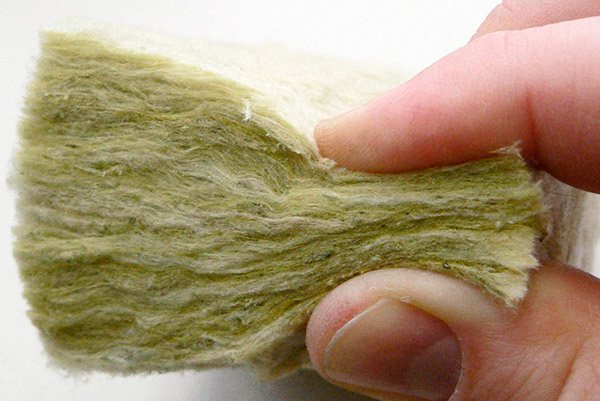

Today, special basalt slabs are on sale for roof insulation. The main advantages of such insulation are the incombustibility of the insulation, high soundproofing, good thermal insulation performance and ease of installation. Such material is produced in the form of plates, cylinders, mats, there is also foil insulation.
Stone wool price
Usually, stone wool price exhibited for packaging. As a rule, it contains several sheets. So, for 4 pieces measuring 100 by 50 and 10 centimeters, they ask from 300 to 900 rubles, depending on the density, composition of the insulation and its name. This refers to the name of the manufacturer, its fame.
Four mineral slabs measuring 120 by 60 by 5 centimeters cost from 500 rubles. As you can see, roll products are more profitable. However, the most attractive options are offered when recycling goods.
Selling off leftovers, some warehouses give stone insulation 3-4 times cheaper than the market price. There are even special utilities services. On one of them, the offer of stone insulation at 30-40 rubles per kilogram is relevant.
Thermal insulation of facades
Basalt insulation is an optimal material for insulation with a set of characteristics that can solve many problems of thermal insulation in any type of structure: from an ordinary residential building to a large enterprise. This building material is resistant to fire, moisture, low temperatures.
Since basalt slabs are characterized by high strength and resistance to weathering, they are the best option for external insulation systems, the so-called thermal insulation of facades. Very often this type of insulation is used with the "wet" facade technology, where the building material does an excellent job with its main function - thermal insulation.


When insulating with basalt slabs, quartz soil, paint on a silicate or silicone base, decorative plaster are used. Silicone based paints allow facades to breathe.
For insulation, it is recommended to use a high-density insulation of 90-135 kg per cubic meter. m. The use of building materials with a lower density is not recommended, as this can lead to slipping of the basalt insulation.
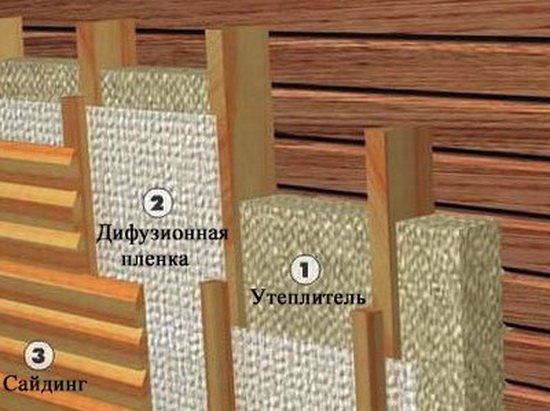

Unlike polystyrene, when installing basalt wool, a fastening such as an umbrella with a metal nail is used.This is due to the large weight of the material, which requires reliable fastening. Thermal insulation of facades with basalt wool is a laborious process and requires responsibility.
Thermal insulation protection
When arranging an insulated attic, in order to protect the thermal insulation from moisture ingress, roll roofing films of two types are most often used. Vapor barrier (vapor barrier) is used from the side of the room, and diffusion membranes are used on top of the insulation, on the outside of the rafters. For gluing the canvases, special mounting tapes are used. It is even better to use films of the new series "Ondutis Smart" ("Ondulin") with an integrated mounting tape. It is not difficult to work with this material: it is enough to remove the protective film, combine it with the overlap, and they easily and reliably join together.
Insulation of internal walls
Wall insulation with basalt wool can also be performed from the inside of the building, where the building material demonstrates excellent thermal insulation properties. In addition, the insulation also performs the function of sound insulation.
Very often, mineral slabs can be found in the internal partitions of offices and apartments, where they are used to provide sound insulation. Vata absorbs sound very well. However, to isolate airborne noise, it is better to use looser slabs with a low density, and for shock noises it is advisable to use rigid and semi-rigid slabs and mats.
Output
Stone wool is a basalt mineral wool obtained by melting mountain parods, with the addition of binders that are absolutely safe for human health and the environment, and its technical characteristics and positive reviews allow it to be used for insulating facades, vertical and horizontal elements of buildings and structures, floors, ceilings, wells, pipelines, roofs and other surfaces.
In the catalog of our online store you can buy any stone wool insulation in the section: Basalt wool, with delivery and unloading in St. Petersburg and the Leningrad region. For more information on the terms of purchase, check with our consultants.
Choose a basalt insulation?
Insulation of a frame house
Warming a frame house with basalt wool is one of the most popular ways to keep warm. After all, the most important requirement of wooden housing construction is fire safety. In addition to the fact that basalt fiber insulation belongs to the class of non-combustible building materials, it is an excellent means of protecting against fire.
When erecting frame buildings, great attention is paid to the use of thermal insulation as thermal protection of the structure. Most often, thermal insulation is used from the outside.
However, such insulation is also applied from the inside. The method of insulation from the inside is considered less advantageous from a constructive point of view. This opinion is due to the fact that with this method, conditions are created inside the building for the formation of condensate in the inner part of the structure, the presence of which over time leads to a reduction in the operational life of the erected building.
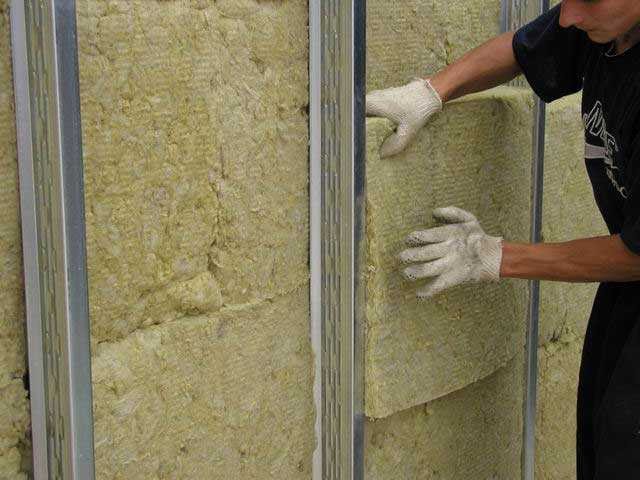

When building frame houses, special attention should be paid to the steam and waterproofing of the walls.
The penetration of moisture into the framework is unacceptable. It is necessary to reliably protect the insulation from external adverse environmental influences, such as: the formation of condensation due to an insufficient level of vapor barrier, as well as the penetration of warm air from the heated room, increased humidification as a result of moisture penetration through the outer skin of the building. Capillary suction of ground water brings no less harm.
Rigid mats and boards are used for protection.Due to the fact that there is no ventilation gap in the structures, there is no need to use foil mats and plates.
Basalt wool is a time-tested thermal insulation, but it is very important that when insulating frame houses, the width of the slabs used should exceed the distance between the inside of the frame by 2 cm. This will reliably fix the used material.
The main advantage of basalt wool, in comparison with fiberglass, is its high density, which allows the building material to withstand heavy loads.
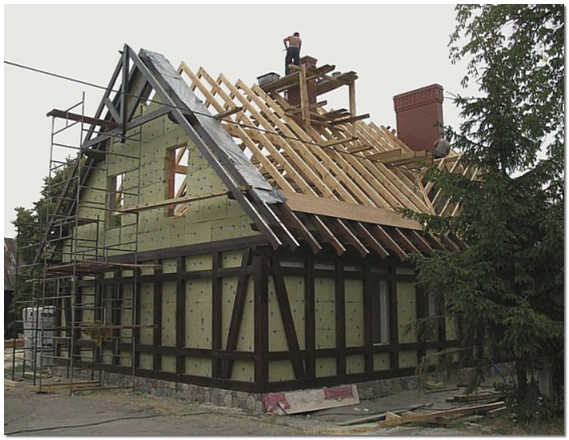

Basalt insulation is very popular in the construction of industrial, commercial and private buildings. Such popularity of this material among specialists and ordinary people is explained by the fact that this material is characterized by a number of unique properties, among which the following attracts attention:
Fire safety. The material is non-flammable and able to resist the spread of fire.
Even under the influence of high temperatures, it does not release substances harmful to the human body; Moisture resistance. The material is not hygroscopic. Even without additional waterproofing, it prevents the accumulation of moisture; Frost resistance.
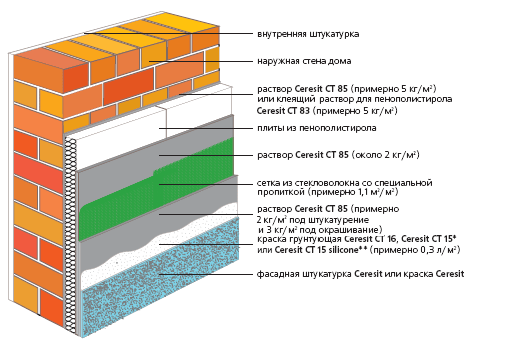

The listed characteristics make it possible to widely use this material for facade insulation. This article will consider the options for using basalt wool and basalt slabs. In particular:
Application
The use of insulation depends on its type and type. Hard and dense slabs, for example, work well under a floating screed. This is the name of the floor, the leveling layer of which is not adhered to the base plate, separated from it by waterproofing. Insulation is needed in the floor slab.
We suggest that you familiarize yourself with: What to do in case of carbon monoxide poisoning, how to provide first aid?
But, rigid stone wool slabs are especially needed in wet façade systems. This is how they call home decoration with liquid mixtures, and not with solid panels, for example, siding. Simply put, plaster is a wet facade. The density and characteristics of dense mineral wool blocks allow the mixture to be applied directly to them.
Among the most dense, Rockwool stone wool is famous. Its peel strength is at least 10 kilopascals. This allows the wet facade to be attached to the insulation boards together with the reinforcing layer.
Affects the use of stone wool and its thickness. Maximum, for example, helps resist deflection. It occurs with non-standard dimensions between the spans of buildings. In this case, they take not only thick cotton wool, but also mount it horizontally. This saves material consumption.
As you can see, when choosing a heater, it is worth focusing not only on the main characteristics, but also on the form of release. If the main thing for the frame is elasticity, then for the floor screed - rigidity.
With proper use and selection, stone wool lasts at least 50 years. The maximum time spent at the "post" is 100 years. The statement has been verified, because the first houses insulated with mineral wool are in the 3rd century.
The use of stone wool as a heater has become widespread since the beginning of the 20th century due to the fact that this natural material (about 95% composed of stone) is non-combustible and durable. The main distribution of stone wool was obtained as a heater for the enclosing structures of buildings (facades, roofs).
- Walls. In ventilated facade systems, facades with a thin or thick plaster layer, lightweight external frame structures, three-layer brick walls, wall reinforced concrete panels, metal sandwich panels, panels of element assembly.
- Partitions. Indoors as sound insulation in partitions in office and residential premises.
- Floors. For warming floors on logs or floor slabs, with the possibility of installing screeds.For sound insulation in floating floor structures.
- Roofs (pitched, flat). It is possible to lay insulation on flat roofs on reinforced concrete slabs or profiled flooring with further waterproofing with bituminous materials or PVC membranes.
- Fire protection of steel bearing columns and beams, transit air ducts, reinforced concrete floors, pipe and cable penetrations
Insulation of equipment and pipelines. Due to its incombustibility and high melting point of the fibers, stone wool can be used to insulate surfaces with temperatures up to 700 ºС.
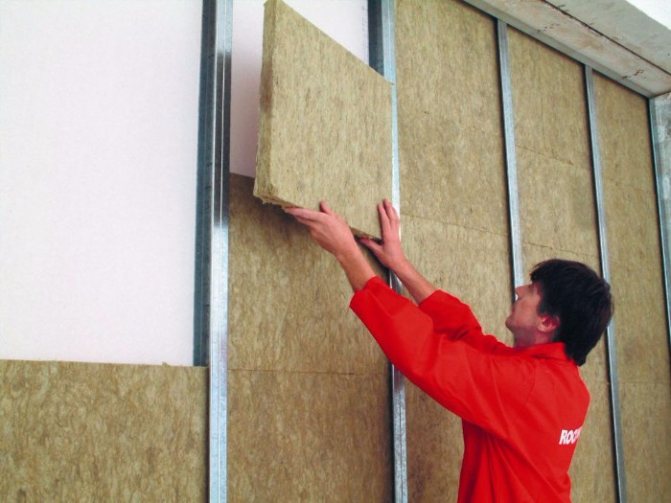

Cylinders, segments or mats (for large radii) can be used to insulate curved surfaces.
Cotton wool insulation is used in the construction of baths, saunas, swimming pools, when laying communications, wells and air ducts. They even put it in the foundations of houses.
Depending on where the insulation will be used, and what kind of load it will bear, it is divided into classes:
- Soft. Suitable for laying wells and ventilated walls.
- Semi-hard. Suitable for walls in multi-storey buildings, for thermal insulation of pipes.
- Hard. Used in foundations, floors.
Facade insulation technology with basalt wool
Basalt wool is used to insulate facades, which will be additionally sheathed with finishing material. This material is most widely used for insulating facades covered with siding.
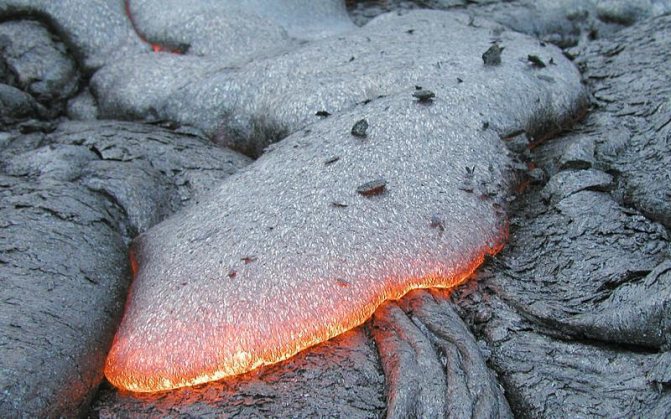

The density of basalt wool should be at least 90–135 kg per cubic meter. m. It is not recommended to use a material of lower density due to the fact that, in this case, there is a possibility of the insulation slipping.
In addition, the thermal insulation characteristics of a less dense material are significantly lower. In any case, the installation of a basalt wool insulation layer requires the manufacture of a reliable frame. It is better if the frame is double, this will eliminate the “cold bridges” in the insulating layer.
Modern industry produces basalt wool in rolls, sheets and cylinders. The most convenient for insulating the walls of a private house are sheets. As a rule, in hardware stores you will be offered the following sizes of basalt wool: 1000 × 500 × 500 millimeters.
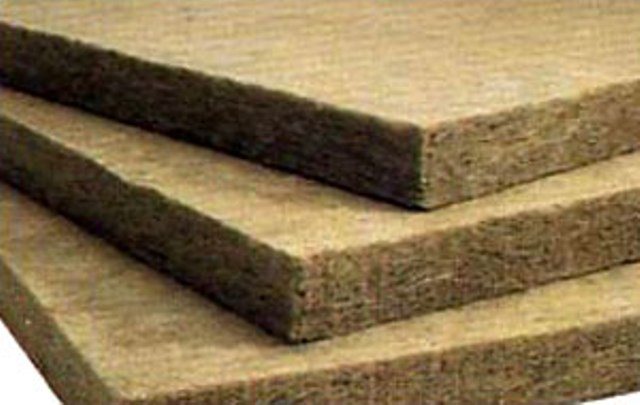

The thickness of the basalt wool is a multiple of 50 millimeters. The thermal conductivity of this material ranges from 0.032 to 0.048 W / mK and is identical to the thermal conductivity of foam, foam rubber and cork. Basalt wool is characterized by high vapor permeability, which ensures good moisture exchange with the environment.
The technology of installing an insulating layer based on basalt wool is quite simple and does not require the use of special equipment. With free time and desire, you can do the insulation of the facade with basalt wool with your own hands. The installation algorithm when working with selected materials includes two stages:
- Installation of the frame (lathing); Laying the insulation material.
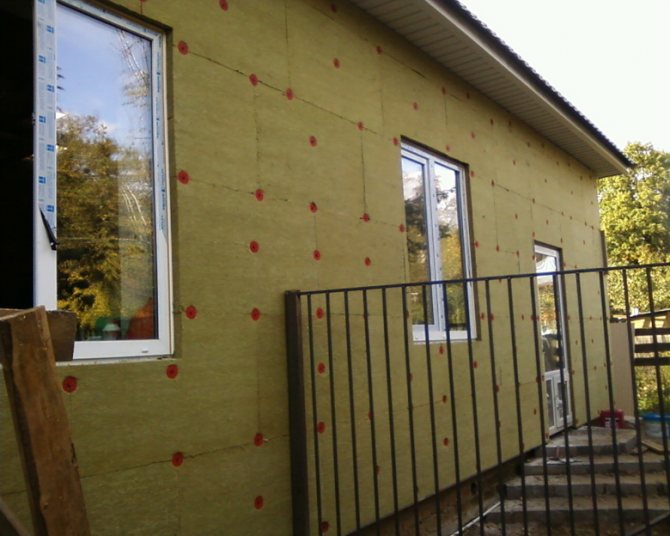

The frame (lathing) of the insulation structure is made of a metal profile or wooden beams.
Its thickness directly depends on the thickness of the insulation, the width of the cells on the size of the sheet of basalt wool. There are a number of factors to consider when choosing the material that is best suited for the fabrication of the frame. In particular: wall material, climatic conditions (rainfall, wind load, etc.).
In most cases, in private construction, a wooden beam or a galvanized profile is used. All other things being equal, preference should be given to the profile. If the choice when searching for a material is made in favor of a wooden frame, then before installation it is necessary to carefully treat all the wooden parts of the frame with antiseptics and fire retardants.
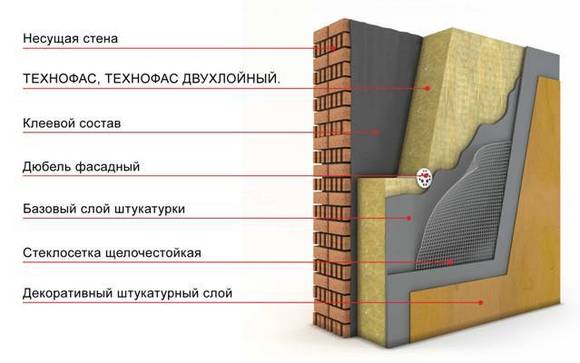

The insulation should be placed between the frame beams as tightly as possible.If the insulation material requires additional waterproofing, then a polyethylene film is used for these purposes.
Important characteristics of facade insulation
We will talk about the insulation of the facade of the house from the outside. Where do you start? Of course, with the choice of materials. When choosing a material, it is imperative to pay attention to its main characteristics.
- Thermal conductivity. The lower the coefficient, the less insulation will be required for work.
- Moisture absorption. The higher the indicator, the less your insulation will serve you. So choose a material with minimal water absorption.
- How dense the material is - shows whether the insulation itself, for example mineral wool for insulating the facade, can withstand its own weight on the wall.
- Fire resistance - will allow you to worry less about the fire safety of your home.
- How ecological the material is. This is important for those who care about their health and the health of their families.
- Soundproofing is a very important point in a modern city when the sound load is high.
- The ability to pass water vapor, which will always tend to leave the house with a difference in pressure.
- How difficult it is to do the editing. This indicator determines how qualified a team you will have to hire to insulate the facade, and, accordingly, pay money for installation.
A widespread, better to say, the second most popular type of insulation material is mineral wool for insulating facades.
Facade insulation technology with basalt slabs
Basalt slabs, due to their high strength and resistance to weathering, are the best options for insulation material for external thermal insulation systems in private houses. Their use makes it possible to significantly expand the scope for technical and design solutions related to facade decoration.
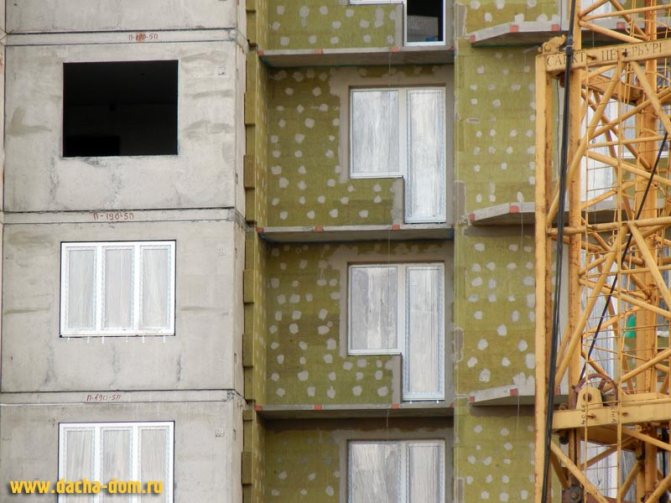

This building material is used (as insulation) in the "wet facade" technology.
The surface of basalt slabs can be treated with quartz soil, decorative plaster, silicate and silicone paints. When choosing paint, it is better to give preference to silicone-based solutions. Such paints do not impede the flow of air into the surface of the facade, in other words, they allow the facade to "breathe".
Basalt fiber slabs are characterized by all the physical, chemical and operational characteristics of mineral wool. They do not contain any additives in their structure.
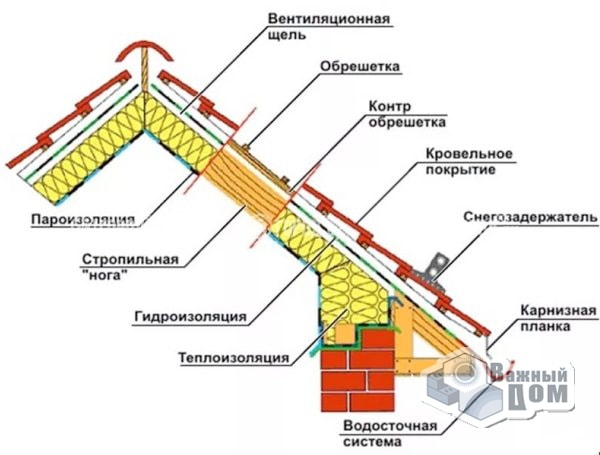

A distinctive feature of basalt slabs is the high manufacturability of this building material. It is easy to transport, store and install.
Warming the facade with basalt slabs with your own hands is within the power of a person who does not have special skills and knowledge. In addition, like mineral wool, the installation process does not require special equipment. Despite the rather high density of the slabs, they can be cut with an ordinary kitchen knife.
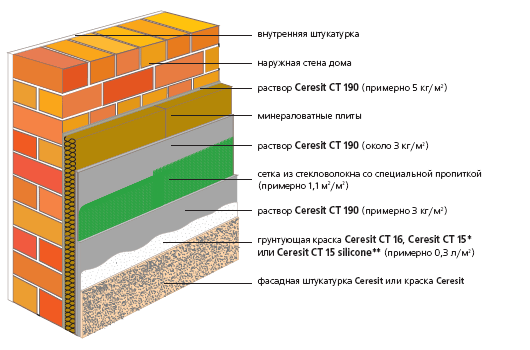

The thermal conductivity coefficient of basalt fiber slabs is in the range of 0.035–0.043 W / m * K, which almost corresponds to the indicators of basalt wool. The vapor permeability indicators of these materials are also identical. Due to their denser structure, basalt slabs have good sound insulation properties.
When installing an insulating layer "under plaster", two types of basalt slabs are used - with a random arrangement of fibers and a slab with an arrangement of fibers perpendicular to the wall plane, and the dimensions of the slabs are mainly 120 × 20 cm.
The process of installing basalt slabs "under plaster" has some peculiarities at the stage of laying the insulation. Plates are glued to the walls using special glue and additionally fixed with umbrella dowels. After installing the entire surface of the insulation, the plates are covered with an adhesive solution and reinforced with a special mesh.
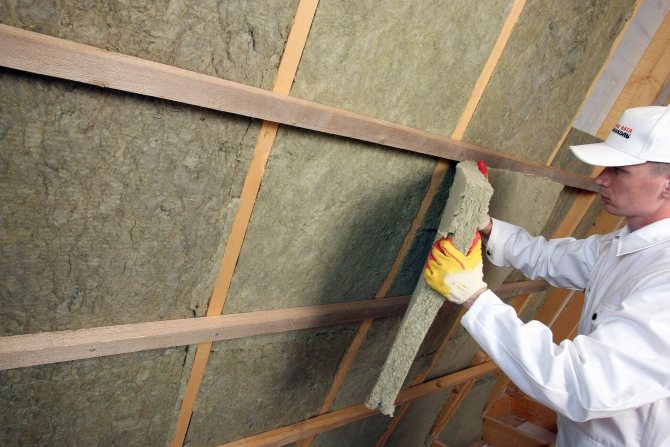

Plates, to a lesser extent than cotton wool, are demanding on the accuracy of the geometric parameters of the frame, but this should not be abused - a tight fit of the insulation to the lathing machines is necessary to ensure a reliable thermal insulation layer.
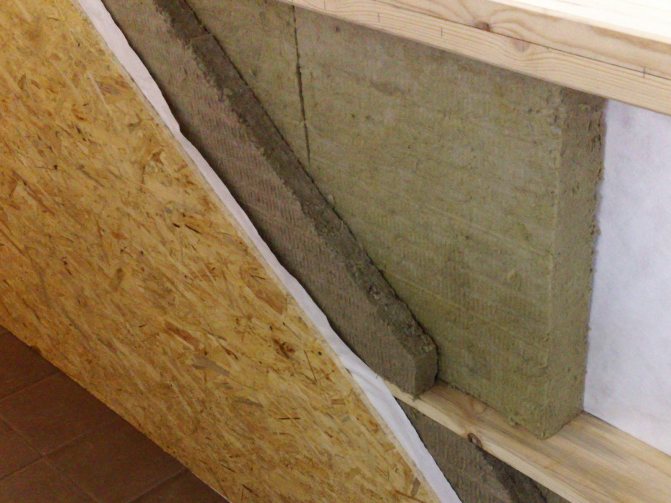

- Date: 17-09-2015Rating: 33
Basalt insulation has natural materials in its structure.
It is based on the material of volcanic rocks and is produced in the form of heat-insulating plates that help to insulate walls and facades. Basalt slabs are insulation in the form of panels that have a fairly rigid fibrous structure. This structure contains basalt fibrous threads, which are linked by various additives and synthetic elements.
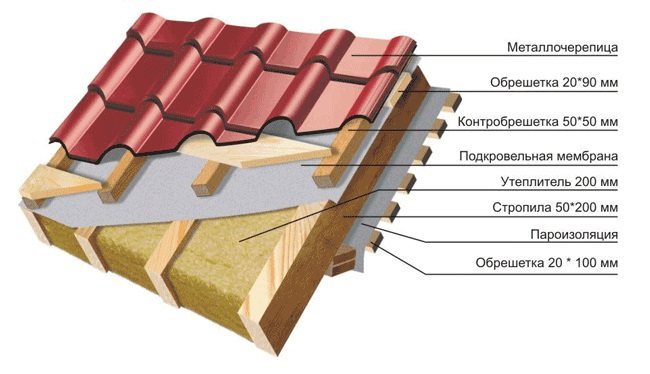

Basalt insulation is made from volcanic rocks by high-temperature melting and subsequent blowing.
One of the important components of any private house is its insulation. Thermal insulation of the house allows you to keep it cozy and comfortable.
The use of basalt will fully help to achieve this task. The experience of using it has shown that such wall insulation is not only reliable and safe, but also fireproof. Those. it can be used for almost any room.
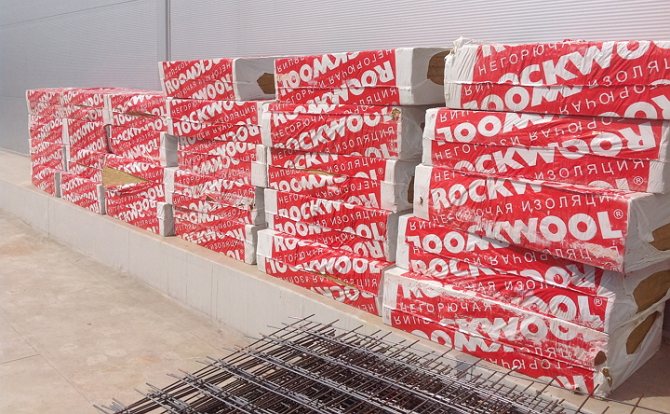

Various forms of basalt insulation make it possible to insulate various structures.
The raw material for such a material is a thin fiber from rocks of magmatic origin. These include basalt, andesite, diabase, etc. In the process of high-temperature melting of these materials (1400-1600 degrees) and their subsequent blowing with the help of a high-speed gas jet, the molten mass is gradually converted into staple fibers.
Next, the resulting fibers are placed in a drum. There, the threads are intertwined in a chaotic state and reach the required density. After cooling to 200 degrees, the resulting mass hardens, and it is given the desired shape.
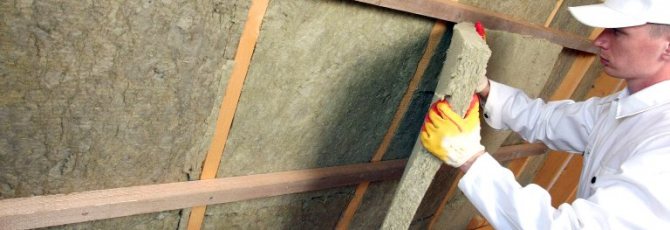

Its form can be of several types:
- Material in the form of slabs (has a formed structure of various thicknesses and areas). Bulk material (made by granules that have different densities and sizes). Basalt wool (made in the form of soft rectangular tiles). Shapes in the form of mats (they consist of quilted fibers, to eliminate the loss of their shape) .Lamellar forms (can be square and rectangular). Basalt fabric (in rolls).
All these materials will provide sufficient protection for the house from freezing, but basalt slabs, due to their ready-made shapes and sufficient thickness, are the most convenient.
Back to the table of contents
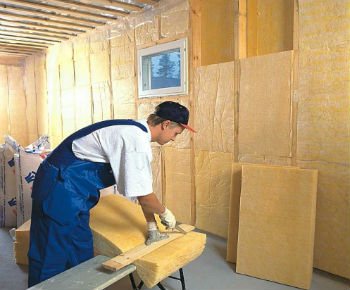

Scheme of roof insulation made of metal tiles.
The procedure for laying the material for thermal protection of the house must be developed at the stage of its design.
It is necessary to immediately determine the possible places of heat leakage. In each house, they will be their own because of its architectural features and location. The most challenging areas will be the attic, roof, slabs and façade.
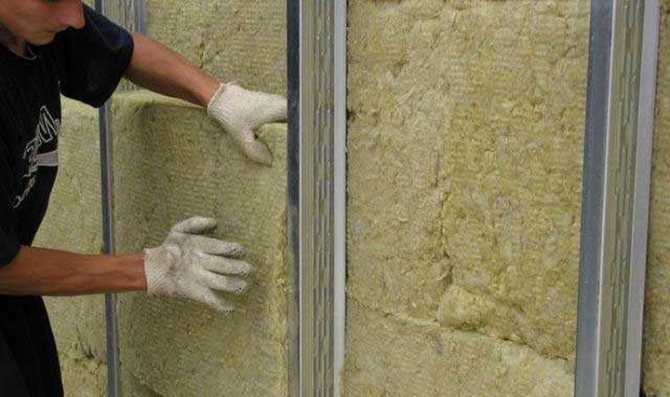

When laying basalt slabs that provide thermal protection to the roof, it is necessary to use a film to create a vapor barrier. It should be laid on horizontal bars between the rafters.
The resulting joints must be sealed with a special tape. The thickness of the layer to be laid should be 180-200 mm. Next, you need to lay a layer of wind protection and make a crate with beams (to ensure ventilation).
In the process of insulating the attic, the insulation must be laid between the logs that are on the floor of the attic. The equal distance between them will ensure the ease of laying basalt slabs. And the resulting gaps need to be covered with cellulose insulation.
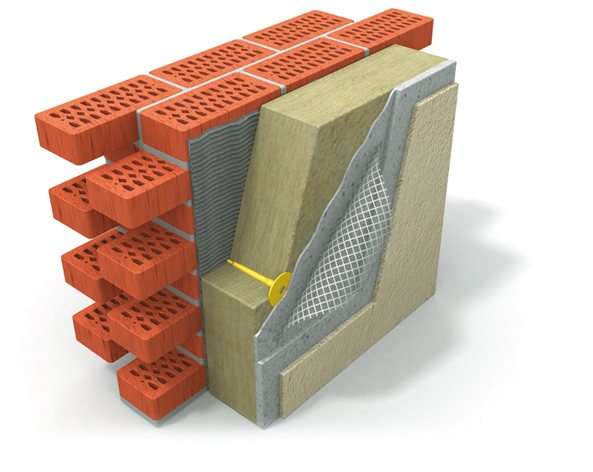

Scheme of wall insulation of a frame house.
Insulation of the floor and ceiling will provide not only their thermal, but also sound insulation.During the work, slabs of material are laid on the floors. The vapor barrier membrane must first be decomposed on them.
The subfloor is laid on this structure. It should be made of moisture resistant plywood (OSB plywood, etc.). After that, you need to lay the substrate, and on it - the desired floor covering.
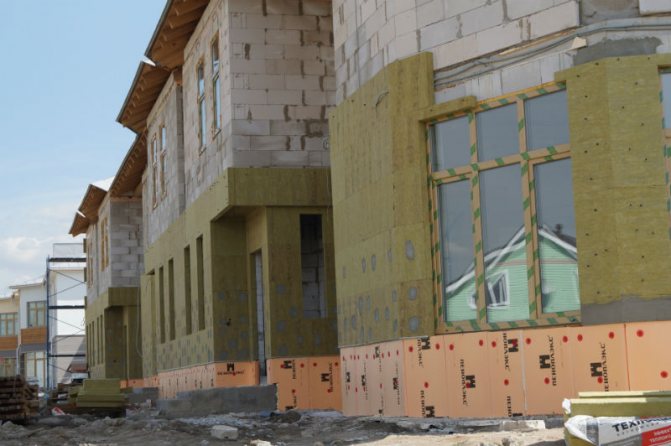

In the course of insulating the walls of the building, the facades are insulated at the same time. Basalt slabs can be used to insulate both the inner side of the wall and the outer one. The order of their insulation is slightly different.
For internal work, it is necessary to initially make a crate of the surface. The step of the lathing should be 60 cm. This width was not chosen by chance, because
because the slabs are of exactly this size. An impervious film is laid on top of the insulation, and the interior decoration is made with it.
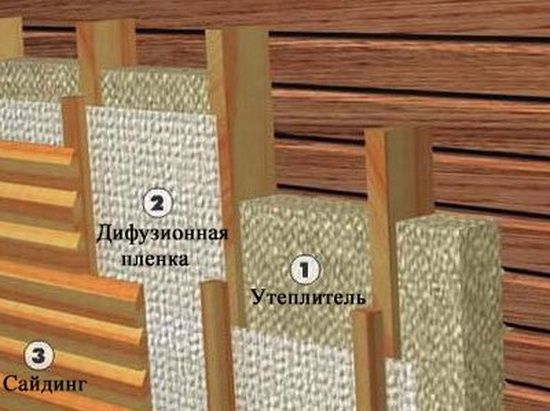

When insulating the walls from the outside, you need to do their preliminary crate. The basalt slab is laid with a slight gap from the final cladding to provide ventilation. It is attached to the base of the wall with self-tapping screws.
Then the windproof film is laid. The work is completed by finishing with siding or any other external coating material (lining, porcelain stoneware, etc.).
Back to the table of contents
Insulation scheme for the external facade of the building.
The peculiarity and advantage of such a material for keeping warm in the house is its versatility. Basalt can be used for both exterior and interior decoration. Moreover, it is completely harmless and environmentally friendly.
It contains no phenolic compounds, the fumes of which are very harmful. They can lead to various diseases. The use of this material leads to a decrease in the total cost of heating the house by an average of 60-65%.
Plates made of this material retain heat very well, since they have a rather low thermal conductivity. At the same time, they protect the room from excessive moisture penetration into it. Therefore, the combination of these factors together allows you to ensure good air circulation and create a comfortable environment in the house.
The construction of basalt slabs is such that their installation will not cause much trouble. They have a fairly reliable and durable structure.
Therefore, they can withstand fairly strong loads without deforming and retaining their appearance. With a competent approach to work on insulation and skillful handling of the assembly tool, you can quickly complete the fastening of this coating.
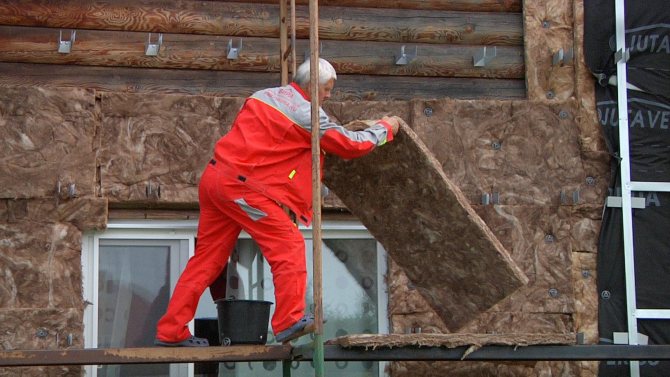

Various materials are used to insulate the facade of a house from a bar.
Nowadays, basalt thermal insulation boards are considered the best materials for insulating the walls of the house from the outside. Mineral wool and foam are also often used, but the first material is not so environmentally friendly, and the second does not breathe. Insulation of the facade with basalt slabs: video and photo materials about insulation in one article.
Production technology
The main composition of stone wool is basalt. It is a rock that appears due to volcanic activity. To obtain a soft material, basalt is melted. The red-hot mass is separated into fibers using various technologies: blowing, rolling and others.
The resulting fibers cannot yet be used in insulation works, since they are not yet solid and tend to crumble at the slightest physical contact. Therefore, the "semi-finished product" must be fastened with adhesive solutions.
In this video you will learn how to choose insulation
For gluing the fibers, phenol-formaldehyde resin is most often resorted to. At this stage, the fibers are not only held together, but also form carpets of the desired thickness. To prevent the insulation from absorbing moisture in the future, it is treated with mineral oils. The very last stage is cutting into the required sizes and packaging. The result is an excellent stone wool insulation.
Most often, other names for stone wool are used on the market - mineral or basalt. All this is one and the same material obtained after processing basalt rocks.
Another common mistake: often people do not know the difference between mineral and glass or slag. The first is made from molten glass, and the second is made from household slags. Mineral wool very quickly displaces its competitors, since glass insulation is much inferior in environmental friendliness, and from slags - in quality.
The whipped woolen bundles of solidified lava found 1500 years ago near the volcano became the prototype of modern mineral stone wool. Later, scientists named it "Pele's hair", in honor of the ancient goddess of fire, which later became the prototype of the basalt fiber launched into mass production in America in 1897.
Modern technology for the production of stone wool is an artificial process that exactly repeats its appearance in a natural way, after a volcanic eruption.
In the process of producing mineral wool, natural volcanic stone and slags are heated in a factory furnace to a temperature of 1500 ° C. The resulting liquid mass is transformed to a chaotic (sometimes vertical or horizontal) fibrous structure. This process is very similar to the process of making cotton candy.
For this, the following technologies are used:
- blowing;
- centrifugal blowing principle;
- centrifugal-blowing-spinneret;
- centrifugal roller method.
As a result, fibers are formed with a maximum length of 500 mm and a thickness of 6-7 microns. By spraying, a binder is added to obtain a "stone carpet", which is subsequently treated with special liquid compounds to increase the density, hydrophobicity and vapor permeability of the "stone carpet".
The final production stage is the polycondensation process, which is achieved by processing the material in a thermal chamber at temperatures above 200 ° C.
As a result, we get a stone insulation with an organic matter content of up to 3%, which is able to withstand fire temperatures up to 1000 ° C without igniting.
Basalt insulation pros and cons
Basalt slabs are made of mineral fibers pressed into slabs.
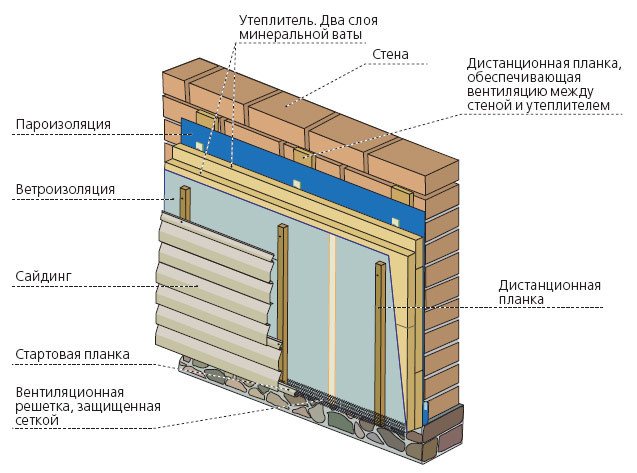

The fibers are interconnected with an adhesive based on various resins. It is made from natural raw materials. Basalt slabs can be used to decorate any living space, as well as food and childcare facilities.
Quite often, this heat insulator is used when decorating private houses and cottages from timber, air ducts and other structural elements. The use of basalt wool is often necessary to provide thermal insulation for industrial equipment (boilers, furnaces, boilers). Basalt slabs can be used as light sound and thermal insulation in a horizontal fencing structure of any type of buildings and structures.
The main advantages of insulation include:
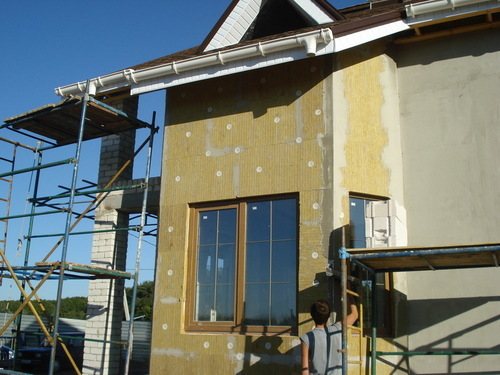

- Lightweight. Does not burn. High heat and sound insulating properties. Suitable for most types of finishes. Elastic material, so it does not break and is not afraid of mechanical stress. Does not collapse from moisture like glass wool. Eco-friendly. Does not block the flow of oxygen into the house, which does not disturb the microclimate wooden house. Easily mounted on any surface. There is no need to level the insulated surface.
Cons of basalt mineral slab insulation:
- The price for the material is higher than for mineral wool or foam. Not every glue can be attached to a wooden facade.
Facade preparation
Before starting work on warming the facade of a wooden house with basalt slabs, it is imperative to inspect the outer walls of the house, its basement and roof. To do this, you need to pay attention to the following actions:
- Look for visible cracks and damage at the junction of the foundation and the first crown, in window and door openings, walls. Look for strong bulges and curvatures, if necessary, cut, put guide bars 2 m long, 40x40 mm section on top. and finish the basement of the house with waterproofing materials, for example, roofing material or coating compounds: liquid glass, bitumen mastic. Clean the surface of the walls of the house from contamination, if there is an old sheathing, dismantle.
Basic rules of work
Mainly mineral wool is used to insulate outside walls, attics and roofs. To insulate the foundation, it is better to use inexpensive, but at the same time, high-quality foam. It has greater rigidity and does not allow water to pass through.
Before use, it is necessary to treat the facade with an antiseptic. This will prevent rotting and prolong the life of the material. Foam concrete or brick must be cleaned of old paint and plaster before installation. The best time for work is summer.
Before installation, it is necessary to remove the window frames and door frames. After installation, you will have to purchase a new window and door cladding, since the thickness of the walls will increase significantly.
There are two main ways to insulate:
- Dry. It is used only with wood or steel frames (lathing). The insulation is installed in the cells of the frame.
- Wet. In this case, installation is carried out using glue and disc dowels.
Dry installation
A frame is used for installation. The slats are installed so that the gap between them is 2 cm less than the width of the cotton wool. This allows for maximum packing density. All work starts from the corners and flows smoothly to the center. For the result to be of the highest quality, and the laying to be even, it is necessary to use a level and a cord that is stretched between the corners of the wall.
If a roll is used during installation, then laying is done from top to bottom. Plates are installed only from the bottom up. The canvas must be fastened with construction tape. To fix the result, holes are drilled and dowels are driven into them.
If it is necessary to make the insulating layer thicker, then the plates are stacked in several layers. It all depends on the needs and preferences of the owner.
Installation of slabs on the facade of the house
Basalt slabs are installed wet and dry.
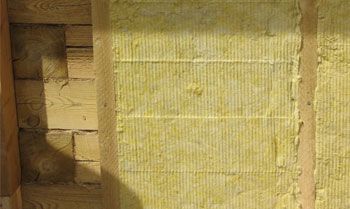

For a wooden house from a bar, it is better to choose a dry one, when the material is attached to the facade using a dowel of nails with a wide head. If the wet method is chosen, then a silicone-based adhesive and quartz sand is used. The fact is that it is more difficult to glue plates to wood than, for example, to cement or brick.
Basalt slabs for the facade of your house are taken with a density of at least 90-135 kg per cubic meter. m. The use of building material with a lower density is not worth it, as it is soft and can slide over time from a vertical wall.
Fastening the material along the entire facade is laborious, so not everyone can do it with their own hands. Basalt slabs will not only protect a wooden house from the cold, but also give it sound insulation no worse than a foam finish.
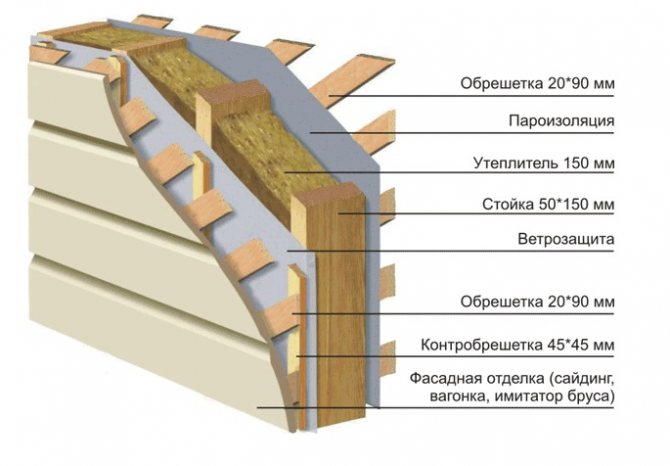

The only thing you should pay attention to is the weight of the plates. It is higher than that of polystyrene, therefore, even with the wet method, it is recommended to additionally secure the material with mushroom nails. More details on how the facade is insulated with basalt wool, in the video:
Installation of mats is carried out in accordance with the selected facing material. The following technologies are used for painting and plastering:
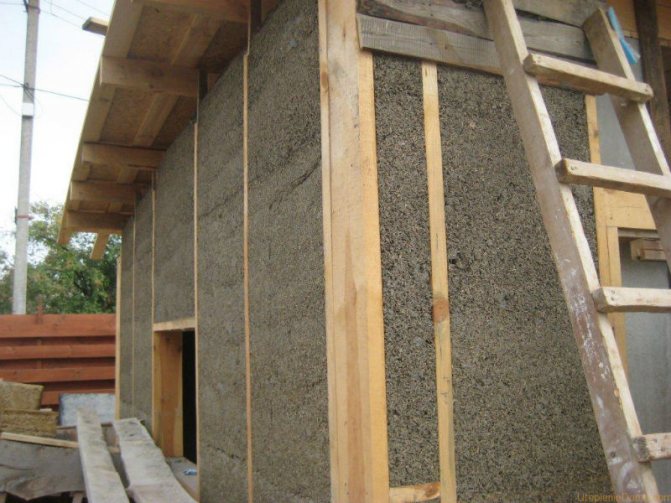

Horizontal strips are mounted on the plinth, they are needed so that the insulation does not slide down and lie flat.
It is necessary to fasten the planks strictly according to the level.Fix the material starting from the corners of the house around the entire perimeter, below the plank. (the method resembles a strapping).Since the standard height of the insulation is 50-60 cm, and the thickness is 20-100 mm, a belt of these dimensions will be obtained. The next stage is to attach the second row of plates, while it is necessary that it is located with the first in a checkerboard pattern. On top of the plate, cover with a hydro-vapor barrier and a reinforced mesh Then the structure is plastered and painted.
Installation under panels (siding, block house, lining, imitation of a bar):
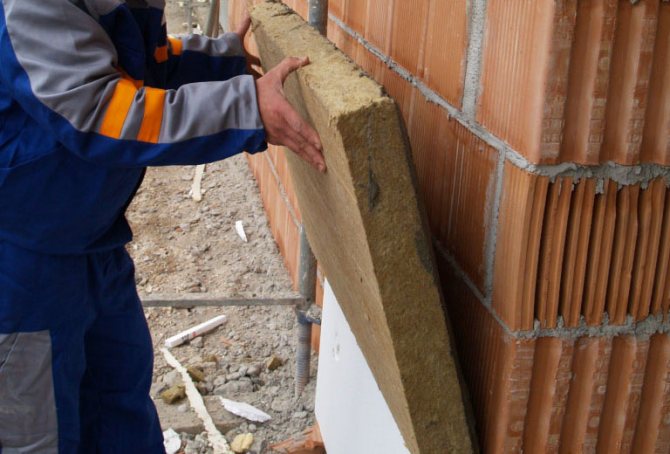

A crate is attached to the walls (vertically) from a bar or metal profiles with a step of 60 cm. To fasten the crate, you must start from the corners of the house, fixing on each side of the bar. Boards. From the bottom between the crate, guide bars 60 cm long are attached, they will support the heat insulator. Between the crate, a basalt slab is mounted.
It is fastened with dowels with a wide head. A hydro-vapor barrier is laid on top. It is mounted with a construction stapler directly to the lathing. The counter lathing is attached to the lathing. It is necessary in order to create an air gap in the structure. Facing material is attached to the counter-batten.
Insulation of the frame structure
Basalt insulation near
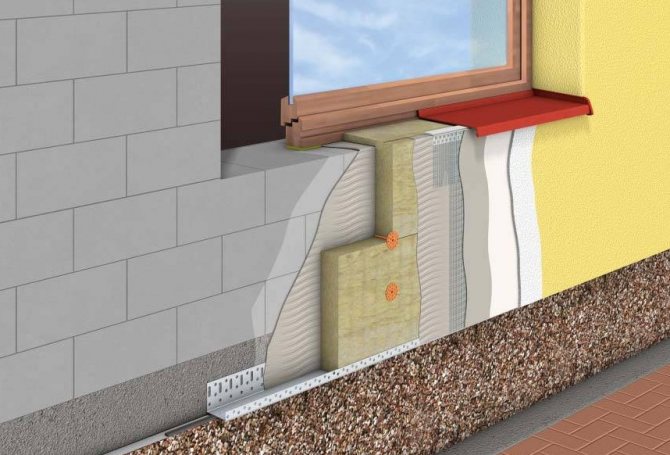

Basalt slabs are considered the best heat insulator for a timber frame house.
It is necessary to mount the insulation outside the structure, since during the interior decoration the frame remains unprotected and condensation will accumulate between the heat insulator and the timber. It gets into the capillaries of wood and will cause rapid decay and mold. When insulating frame houses, special attention should be paid to the vapor and waterproofing of the structure.
The penetration of moisture inside the house is unacceptable. In this case, the design of the facade finishing must be ventilated.
Since the temperature difference between the inside and outside of the building will be significant in winter, condensation may form. For better insulation, you can use basalt slabs foiled on one side. The price for them is higher, but the house will be protected from moisture.
At the same time, it is necessary to qualitatively waterproof the foundation of the house, since the tree will absorb moisture from the foundation and it will be difficult for it to erode from the structure with slabs. A basalt slab with a thickness of more than 2 cm is chosen for insulating a wooden frame house, or it is necessary to make a double structure.

